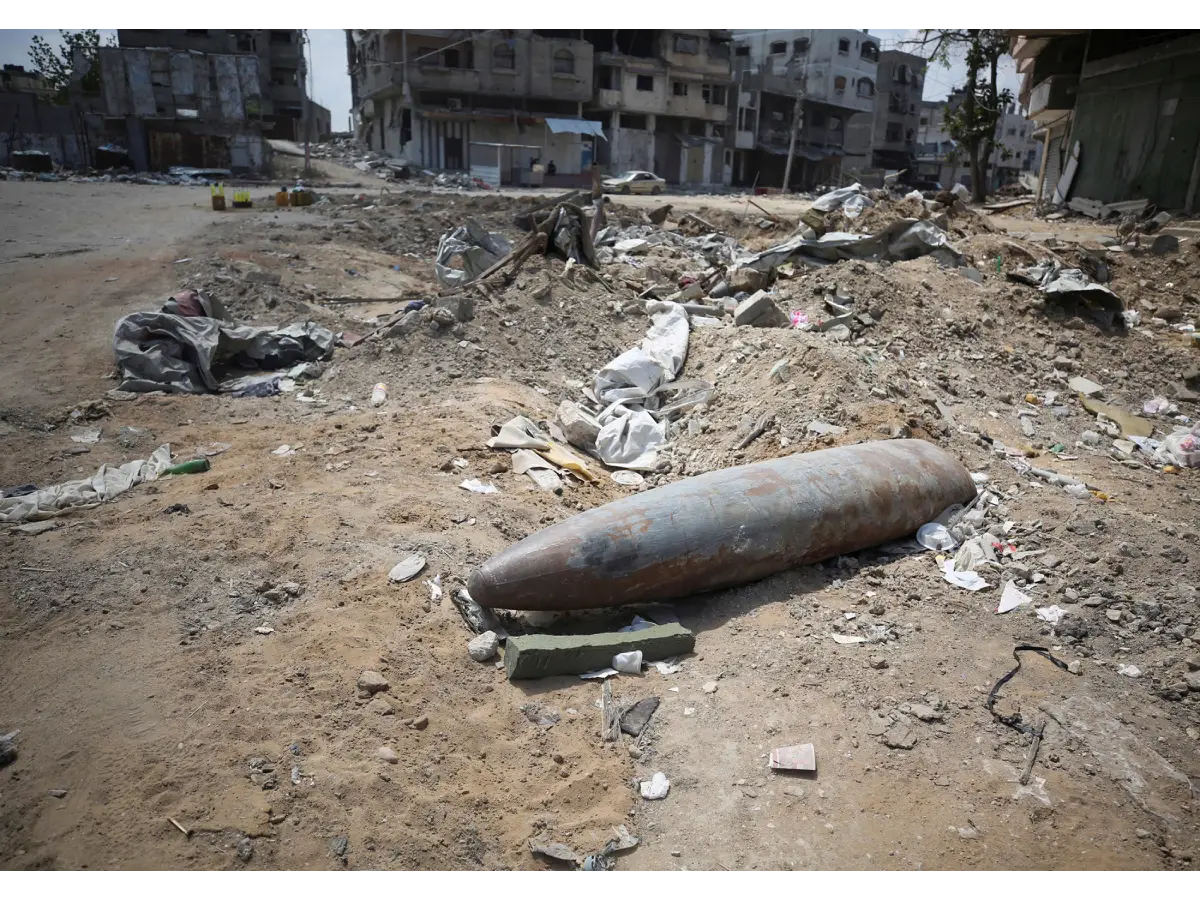Copyright qna

Gaza, October 28 (QNA) - Palestinians in Gaza face constant danger from unexploded Israeli bombs and missiles, with local authorities unequipped to manage the threat, driving urgent appeals for international expertise to safely clear the deadly remnants.These remnants of war have become deadly time bombs, endangering civilians, particularly as displaced residents return to their homes, many of which lie in ruins or are surrounded by tents.Estimates indicate that thousands of bombs and missiles launched by Israeli aircraft and artillery remain unexploded, scattered across destroyed homes, rubble, roads, and beneath demolished structures. Among them are so-called robots, Israeli armored vehicles laden with tons of explosives, planted in residential areas to cause massive destruction.Official statistics in Gaza suggest that over the past two years of conflict, the Israeli military dropped more than 200,000 tons of explosives on the Strip. These include warplanes and helicopter missiles, artillery shells, barrel bombs, and other types of weaponry, some reportedly used for the first time, according to international and UN reports that describe Gaza as a testing ground for new Israeli arms.Approximately 71,000 tons of unexploded ordnance and remnants are believed to remain, said Spokesperson for Gaza's Civil Defense Mahmoud Basal.In a statement to Qatar News Agency (QNA), Basal noted that many of these war remnants have been found inside residential buildings, on roads, and in agricultural areas, making every rescue, cleanup, or recovery operation a life-threatening endeavor.He emphasized that rescue teams face real dangers, as any misstep could trigger an explosion, potentially killing civil defense personnel or civilians at the site.A source from the Explosives Engineering Unit of Gaza's General Directorate of Police said that specialized teams have been working since the ceasefire to deal with war remnants and suspicious objects left behind by Israeli forces across all governorates of the Gaza Strip, using the limited resources available.The source told QNA's Gaza correspondent that recent days have witnessed several incidents involving explosions of suspicious objects and unexploded bombs, resulting in injuries, including among children who had unknowingly tampered with them. The source urged citizens to exercise caution, monitor their children closely, and avoid approaching or handling any remnants or strange objects found among the rubble of destroyed buildings, stressing the importance of reporting such findings to the relevant authorities. Director of the Gaza Center for Human Rights Mohammed Khairi affirmed that remnants of Israeli military aggression in the Gaza Strip pose a daily threat to civilian lives and obstruct humanitarian response efforts, impeding rescue operations, debris removal, and attempts to restore normalcy.In his remarks to QNA, Khairi stated that preliminary estimates indicate the presence of approximately 20,000 unexploded ordnances, including bombs, missiles, and shells, dropped by Israeli forces during a military campaign and acts of genocide that lasted over two years. These remnants, he underscored, are scattered across an estimated 65 to 70 million tons of rubble resulting from the destruction of thousands of homes, facilities, and vital infrastructure, forming deadly time bombs.Khairi warned that the massive volume of debris, coupled with unexploded remnants, exacerbates the situation and places Gaza at the center of what may be the largest humanitarian catastrophe in modern history. He underlined that these remnants pose grave risks to displaced persons returning to their homes and obstruct efforts to revive life in affected areas.He noted that the Gaza Center for Human Rights has documented multiple explosions caused by unexploded ordnances in recent months, including one in the Al Zaytoun neighborhood east of Gaza City, which resulted in civilian casualties during an attempt to clear rubble near a residence.Khairi emphasized that such incidents are stark reminders of the ongoing danger present in every street and neighborhood across the Strip. Any location previously targeted by airstrikes or ground incursions now carries the risk of sudden explosions during the return of displaced residents or while humanitarian teams prepare sites for resettlement, recovery of bodies, or agricultural rehabilitation.He described the presence of unexploded war remnants as a flagrant violation of international humanitarian law, particularly the Geneva Conventions, which obligate occupying forces to take all possible measures to protect civilians, ensure the removal of war remnants from populated areas, and disclose the locations of unexploded munitions.Khairi called for the urgent formation of specialized international committees under UN supervision to conduct a comprehensive and rapid survey of all areas in Gaza to identify unexploded ordnance sites.He urged the deployment of international engineering teams equipped with the necessary tools and expertise to safely remove these remnants and secure inhabited zones, while compelling Israeli authorities to immediately release maps and coordinates of munitions dropped or planted during the conflict.According to a report by a Palestinian research center, estimates suggest that between 5 to 10 percent of Israeli war remnants remain active beneath the rubble, making Gaza one of the most contaminated regions globally in terms of explosives relative to its size and population.A report by the Palestinian Center for Political Studies, cited by QNA, warns that unexploded ordnance in Gaza poses a complex crisis, threatening civilians, hindering reconstruction, and serving as a political tool for Israel to restrict equipment access and maintain control over demining efforts.The report urged the launch of a national plan to clear Gaza of unexploded ordnance, backed by international technical and financial support, to safeguard civilians, enable safe reconstruction, and prevent foreign control over Palestinian territory. The ceasefire between Hamas and Israel took effect on the tenth of this month, following the Israeli military’s withdrawal from populated areas and the return of displaced residents to northern Gaza, marking the first phase of U.S. President Donald Trump’s initiative to end the war. (QNA)



